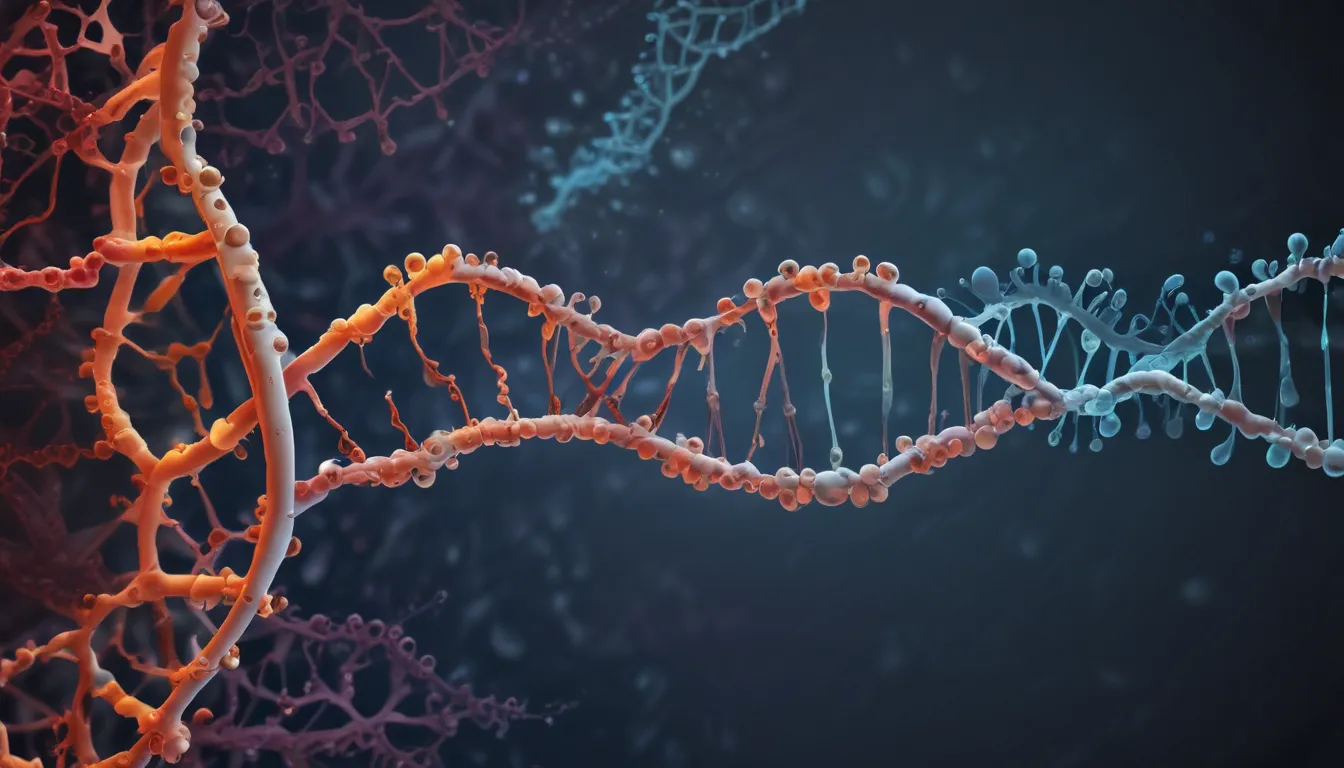A Note About Images: The images used in our articles are for illustration purposes only and may not exactly match the content. They are meant to engage readers, but the text should be relied upon for accurate information.
In the intricate dance of gene expression, mRNA stability emerges as a pivotal player, determining the fate of vital genetic information within our cells. As researchers delve deeper into this captivating realm, a wealth of insights unveils the significance of mRNA stability in shaping biological processes. Let’s embark on a journey to unravel 13 fascinating facts about mRNA stability, delving into its profound impact on gene regulation, protein production, and potential therapeutic interventions.
Key Takeaways:
- mRNA stability intricately regulates protein synthesis, influencing essential bodily functions.
- Factors like RNA-binding proteins and non-coding RNAs can sway mRNA stability, impacting health and disease outcomes.
- Targeting mRNA stability for therapeutic purposes holds promise in revolutionizing treatment strategies for a myriad of health conditions.
The Crucial Role of mRNA Stability in Gene Regulation
At the core of gene expression lies the concept of mRNA stability, delineating the lifespan of mRNA molecules within our cellular machinery. This critical factor meticulously orchestrates gene expression, exerting a profound influence on a myriad of biological processes.
Deciphering the Impact on Gene Expression Levels
The stability of mRNA molecules orchestrates the abundance of proteins synthesized from our genes. A delicate balance ensues, where instability can trigger rapid mRNA degradation, hampering protein synthesis, while enhanced stability can fuel increased protein production.
Unveiling the Influential Factors
A multitude of elements converge to shape mRNA stability, encompassing specific motifs within mRNA sequences, RNA-binding proteins, non-coding RNAs, and intricate cellular signaling pathways. This intricate interplay either fosters or impedes mRNA stability, sculpting the landscape of gene regulation.
The Pivotal Role of AU-Rich Elements (AREs)
AREs emerge as pivotal players in the regulation of mRNA stability, dwelling as short sequences of adenine (A) and uracil (U) nucleotides in the 3′ untranslated region of mRNA molecules. These elements intricately interact with RNA-binding proteins, fine-tuning mRNA stability.
Unveiling the Primacy of Exoribonucleases
Steering the degradation of mRNA molecules, exoribonucleases emerge as the stalwart sentinels within our cellular realm. Methodically removing nucleotides from the 3′ end of mRNA, these enzymes orchestrate the eventual degradation of mRNA molecules.
The Influence of RNA-Binding Proteins in mRNA Regulation
Navigating the intricate landscape of mRNA stability, RNA-binding proteins emerge as key regulators. By engaging specific mRNA sequences, these proteins wield the power to either bolster mRNA degradation or safeguard it from untimely demise.
Illuminating the Role of Non-Coding RNAs
The realm of mRNA stability welcomes the influence of non-coding RNAs, including microRNAs and long non-coding RNAs. These molecular maestros sway mRNA stability through intricate interactions, leading to either degradation or translational repression.
Adapting to Cellular Stress
In the face of cellular stressors, the landscape of mRNA stability undergoes dynamic shifts. Stress-responsive signaling pathways meticulously modulate mRNA stability, fostering adaptive cellular responses to environmental challenges.
Spotlight on mRNA Stability in Disease Development
The intricate web of mRNA stability intertwines with disease pathology, underpinning conditions such as cancer, neurodegenerative disorders, and autoimmune maladies. Dysregulation of mRNA stability disrupts normal gene expression, paving the path for disease progression.
Unraveling the Link to Drug Resistance
In the realm of cancer therapeutics, alterations in mRNA stability wield the power to confer drug resistance. Perturbations in mRNA stability can thwart the efficacy of therapy by influencing the expression of drug targets, transporters, and signaling proteins.
Poly(A) Tail Length: A Decisive Factor in mRNA Stability
The poly(A) tail, adorned with adenine nucleotides at the 3′ end of mRNA, emerges as a pivotal player in the realm of mRNA stability. Modulating the poly(A) tail length intricately regulates mRNA stability, thereby finely tuning gene expression levels.
Harnessing Small Molecules for mRNA Stability Modulation
Small molecules emerge as formidable allies in the pursuit of modulating mRNA stability. From therapeutic drugs to endogenous compounds, these agents deftly interact with mRNA sequences or RNA-binding proteins, reshaping the stability of target mRNAs.
Empowering Therapeutic Interventions through mRNA Stability Research
The landscape of mRNA stability harbors immense promise for therapeutic innovations. By unraveling the mechanisms underlying mRNA stability, researchers pave the path for novel drug development strategies, poised to revolutionize disease treatment paradigms through selective gene modulation.
Conclusion
In the symphony of gene expression, mRNA stability emerges as a maestro orchestrating the intricate dance of biological processes. With each revelation, the intricate web of mRNA stability unfurls, illuminating the path towards a deeper understanding of diseases and potential therapeutic breakthroughs. As we traverse the realm of mRNA stability, new horizons await, offering a glimpse into the profound intricacies of cellular machinery in health and disease.
FAQs
Q: What is mRNA stability?
A: mRNA stability delineates the duration of mRNA molecules within cells before degradation, influenced by RNA-binding proteins, cis-elements, and cellular signaling pathways.
Q: Why is mRNA stability important?
A: mRNA stability exerts a crucial influence on gene expression, finely tuning protein synthesis levels to ensure proper cellular functions.
Q: How is mRNA stability regulated?
A: mRNA stability undergoes regulation through a complex interplay of RNA-binding proteins, cis-elements, and cellular signaling pathways, shaping the fate of mRNA molecules.
Q: What happens when mRNA is unstable?
A: Unstable mRNA is prone to degradation before protein translation, leading to reduced protein synthesis and potential alterations in cellular functions or disease states.
Q: Can mRNA stability be manipulated?
A: Indeed, mRNA stability is amenable to manipulation for modulating gene expression patterns. Researchers explore diverse strategies, from RNA-binding proteins to small molecules, to harness mRNA stability for therapeutic purposes.
Embark on a journey through the intricate tapestry of mRNA stability, where each revelation unveils a new facet of gene regulation and cellular dynamics. With a keen eye towards therapeutic innovations and a quest for unraveling the mysteries of life’s molecular machinery, let curiosity be your guide as we navigate the enigmatic realm of mRNA stability.






